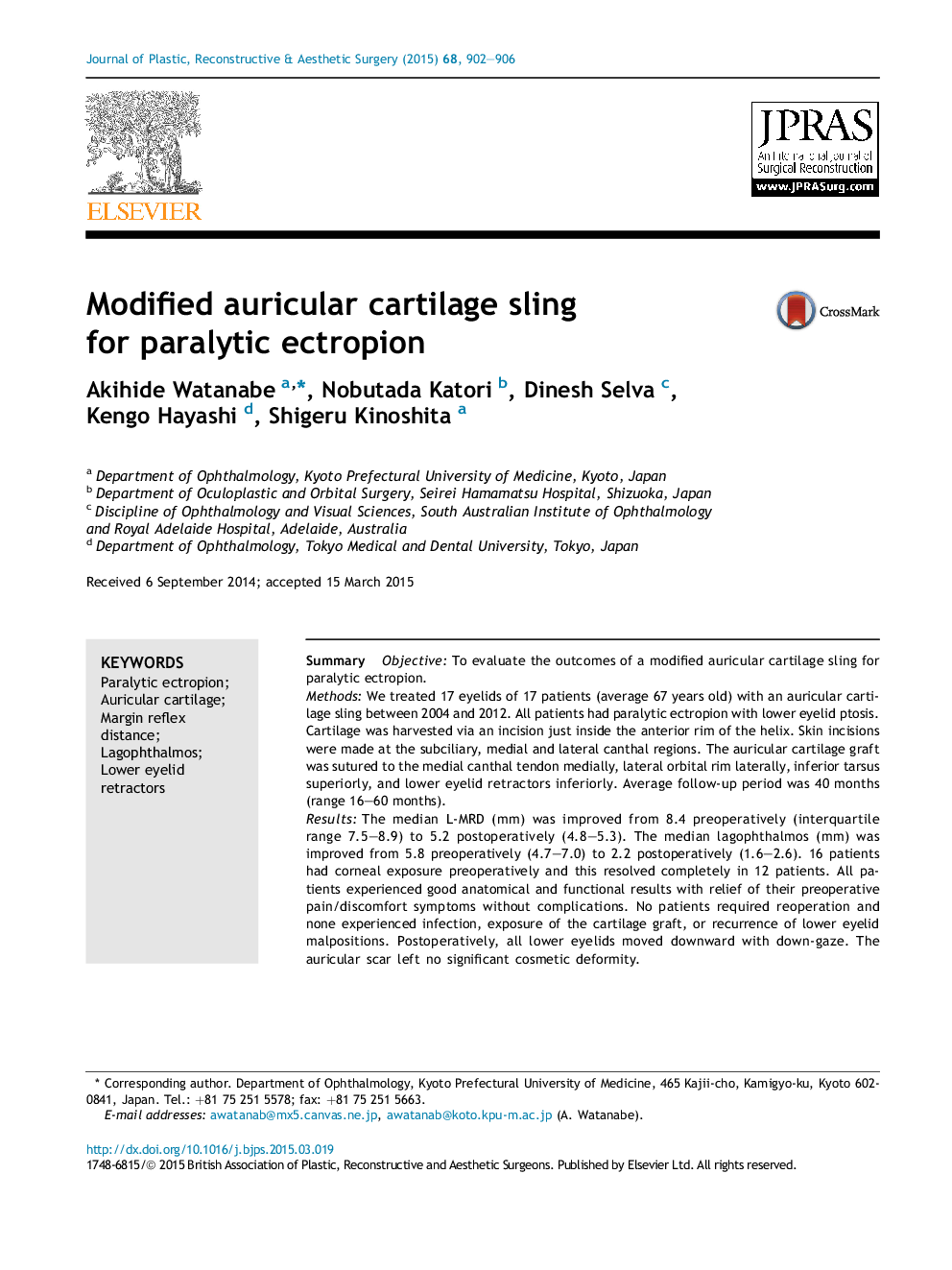| Article ID | Journal | Published Year | Pages | File Type |
|---|---|---|---|---|
| 4117243 | Journal of Plastic, Reconstructive & Aesthetic Surgery | 2015 | 5 Pages |
SummaryObjectiveTo evaluate the outcomes of a modified auricular cartilage sling for paralytic ectropion.MethodsWe treated 17 eyelids of 17 patients (average 67 years old) with an auricular cartilage sling between 2004 and 2012. All patients had paralytic ectropion with lower eyelid ptosis. Cartilage was harvested via an incision just inside the anterior rim of the helix. Skin incisions were made at the subciliary, medial and lateral canthal regions. The auricular cartilage graft was sutured to the medial canthal tendon medially, lateral orbital rim laterally, inferior tarsus superiorly, and lower eyelid retractors inferiorly. Average follow-up period was 40 months (range 16–60 months).ResultsThe median L-MRD (mm) was improved from 8.4 preoperatively (interquartile range 7.5–8.9) to 5.2 postoperatively (4.8–5.3). The median lagophthalmos (mm) was improved from 5.8 preoperatively (4.7–7.0) to 2.2 postoperatively (1.6–2.6). 16 patients had corneal exposure preoperatively and this resolved completely in 12 patients. All patients experienced good anatomical and functional results with relief of their preoperative pain/discomfort symptoms without complications. No patients required reoperation and none experienced infection, exposure of the cartilage graft, or recurrence of lower eyelid malpositions. Postoperatively, all lower eyelids moved downward with down-gaze. The auricular scar left no significant cosmetic deformity.ConclusionsThe modified auricular cartilage sling with 4 point fixation for paralytic ectropion appears to maintain normal eyelid mobility with down-gaze and avoids the problem of lower eyelid fixation.
